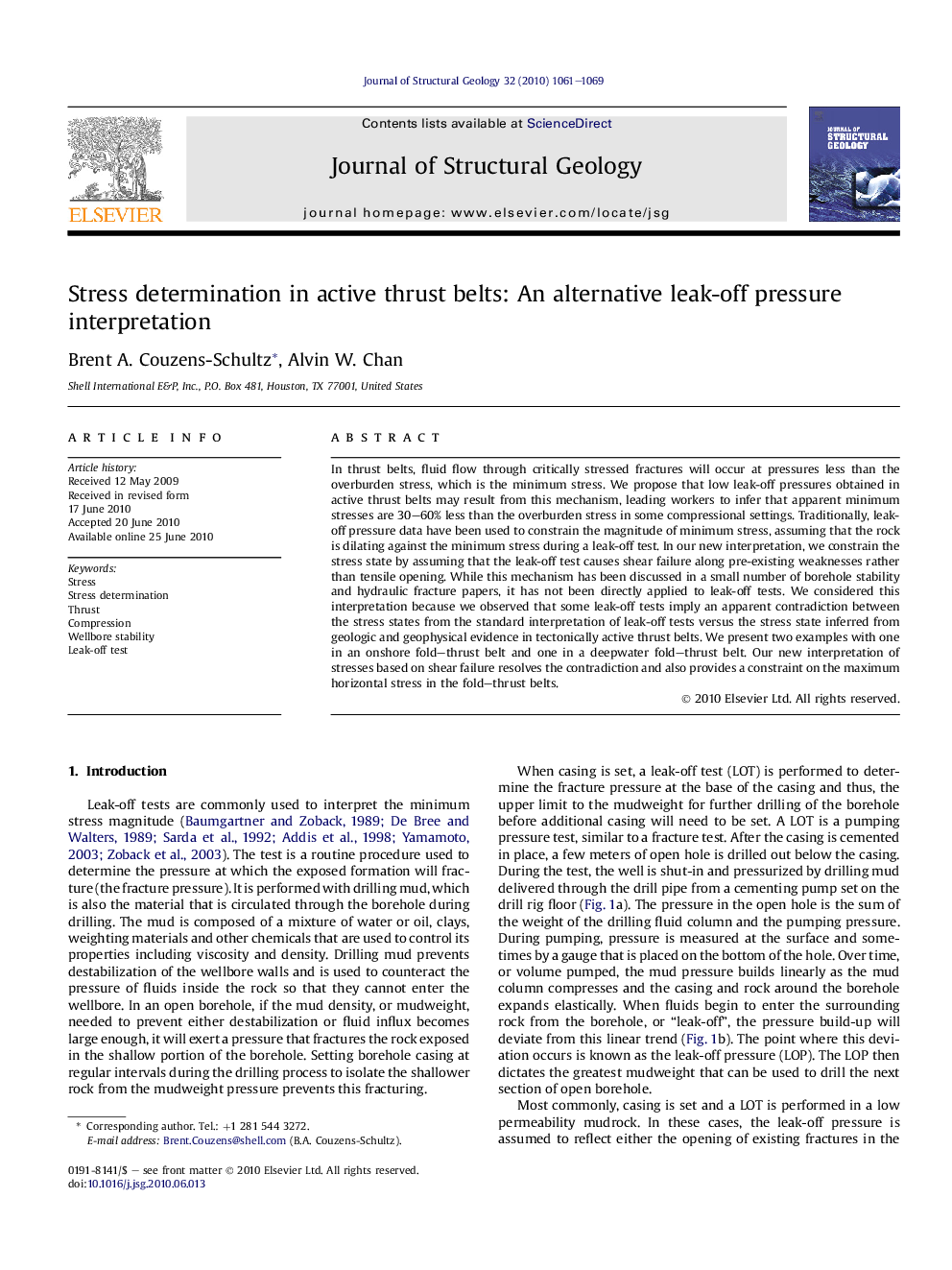| Article ID | Journal | Published Year | Pages | File Type |
|---|---|---|---|---|
| 4733631 | Journal of Structural Geology | 2010 | 9 Pages |
In thrust belts, fluid flow through critically stressed fractures will occur at pressures less than the overburden stress, which is the minimum stress. We propose that low leak-off pressures obtained in active thrust belts may result from this mechanism, leading workers to infer that apparent minimum stresses are 30–60% less than the overburden stress in some compressional settings. Traditionally, leak-off pressure data have been used to constrain the magnitude of minimum stress, assuming that the rock is dilating against the minimum stress during a leak-off test. In our new interpretation, we constrain the stress state by assuming that the leak-off test causes shear failure along pre-existing weaknesses rather than tensile opening. While this mechanism has been discussed in a small number of borehole stability and hydraulic fracture papers, it has not been directly applied to leak-off tests. We considered this interpretation because we observed that some leak-off tests imply an apparent contradiction between the stress states from the standard interpretation of leak-off tests versus the stress state inferred from geologic and geophysical evidence in tectonically active thrust belts. We present two examples with one in an onshore fold–thrust belt and one in a deepwater fold–thrust belt. Our new interpretation of stresses based on shear failure resolves the contradiction and also provides a constraint on the maximum horizontal stress in the fold–thrust belts.
Research highlights► Critically stressed fractures can influence leak-off test results ► Leak-off test pressures can be lower than minimum stress ► Shear interpretation of such leak-off tests can be used to constrain in-situ stress ► Shear interpretation of such leak-off tests can constrain the maximum stress in thrust belts
